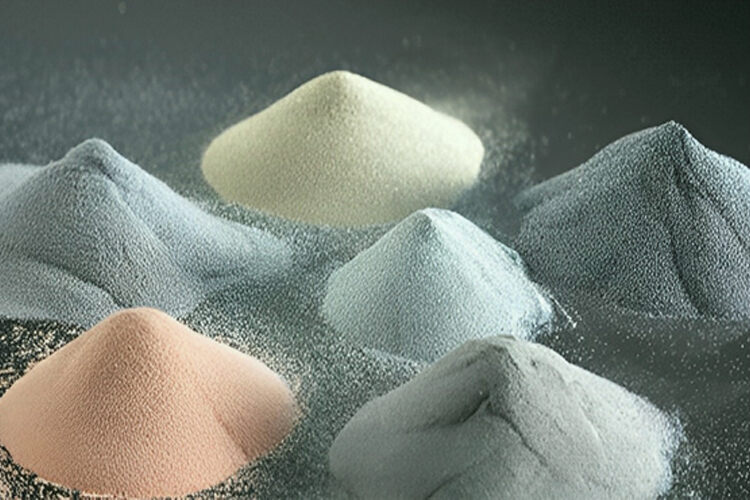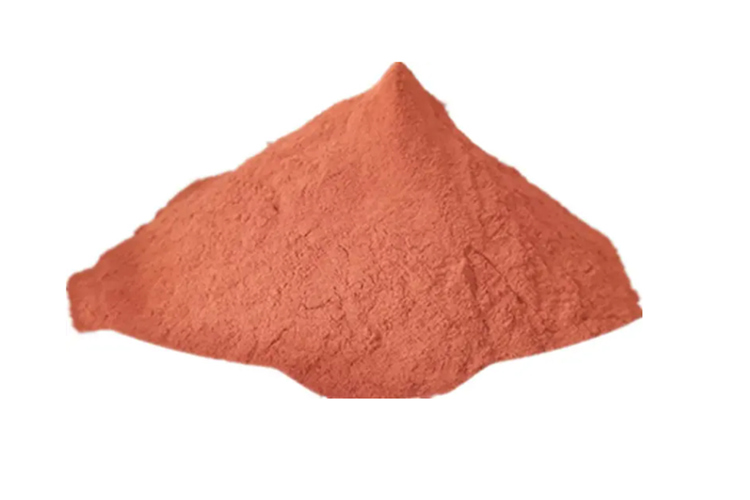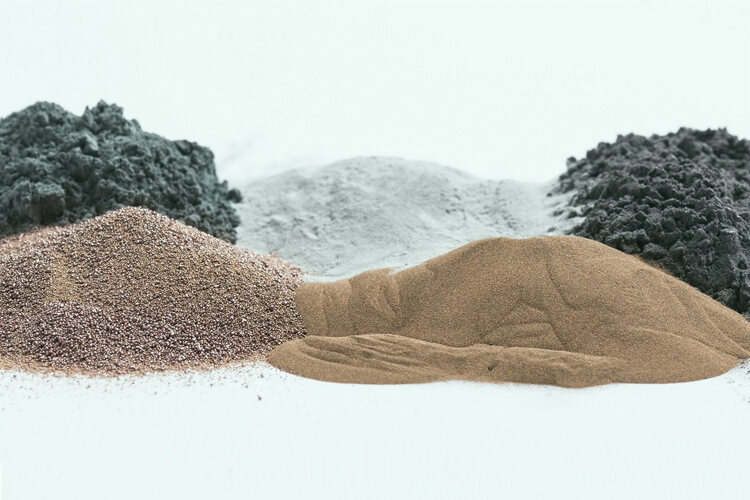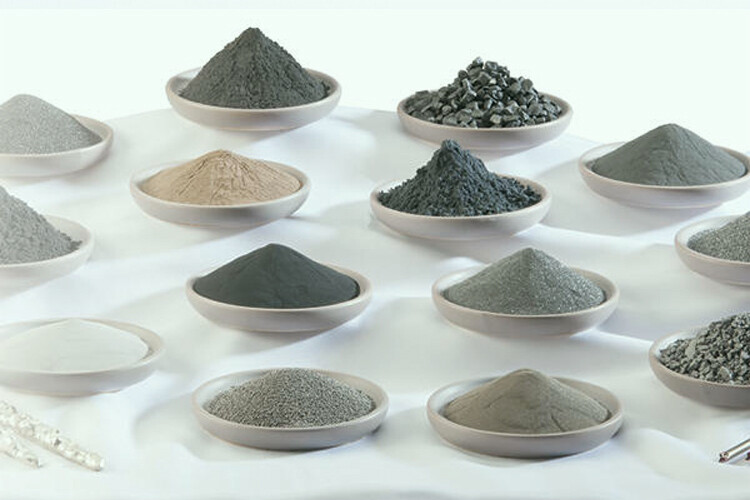Powder Metallurgy Materials
Many people consider the importance of powder metallurgy process.
But powder metallurgy materials are the pillars of this process.
In this blog, we will discuss various powder metal materials, their prices, production methods, and the top three manufacturers.

Powder Metallurgy Raw Materials
Metal Powders
- Iron powders
Iron is known for its good compressibility, high strength and excellent magnetic properties. Powder metallurgy iron-based parts have the advantages of high dimensional accuracy, multiple pores, and no segregation of alloy elements.
Moreover, iron powder price is usually low. They can be produced by the following methods:
- Reduction
- Atomization
- Electrolysis
- Copper powders
Copper has high thermal and electrical conductivity, excellent ductility, as well as corrosion resistance.
Besides, copper is not only a base powder, but can also be mixed into other powders as a trace element.
Furthermore, you can utilize copper infiltration process to alloy copper with other metals to enhance mechanical properties. For example, Copper infiltration in iron-based parts can increase their toughness.

- Stainless steel powders
When your product need rust resistance and high strength, stainless steel powder is a must. Stainless steel resists corrosion mainly because of its chromium content. Chromium forms a thin, stable oxide layer on the steel’s surface.
These powders have several uses, like automotive components, kitchen appliances, and chemical processing equipment.
- Aluminum powders
Aluminum also possesses good thermal and electrical conductivity and exhibits excellent machinability. There are two ways to produce aluminum powder: atomization and mechanical grinding.
Powder metallurgy manufacturers extensively use them to produce lightweight structural parts and engine parts.
- Tungsten powders
Tungsten offers high-density, high-temperature resistance, together with exceptional hardness. So they are suitable for radiation shielding, aerospace components, and wear-resistant tools and materials.
Alloy Powders
- Nickel (Ni)
Nickel can increase the strength and toughness of iron. In addition, due to its good hardening ability, the strength and hardness can be improved after heat treatment. Therefore, nickel is a good alloy element for product that need heat treatment.
- Chromium (Cr)
It boosts the hardness, corrosion resistance and wear resistance of components. Cr element is especially important in stainless steel because it helps improve oxidation resistance.
- Molybdenum (Mo)
Molybdenum helps increase the strength and hardness of metals at high temperatures. In addition, it helps improve the material’s resistance to warping and expansion at high temperatures.
- Manganese (Mn)
Manganese element is a highly hardening element that contributes greatly to the mechanical properties of heat-treated components. Since manganese is easily oxidized, it is usually in the form of pre-alloyed.
It also acts as a deoxidizer to remove unwanted oxygen.
Soft Magnetic Materials
These materials have the following advantages:
- High Permeability
- Low Coercivity
- Low Hysteresis Loss
Common soft magnetic materials include:
- Pure iron
- Iron-phosphorus alloy
- Iron-nickel alloy
- Iron-cobalt alloy
Pre-alloyed Powders
Some alloying elements have high melting points, making them challenging to integrate into parts during sintering process. To address this, manufacturers use pre-alloyed powders, which are created by melting and mixing metals. Examples of common pre-alloyed powders are FL-4205, FLC-4608, and FLN-4205.

Ceramic Powders
You might consider using ceramic for these reasons:
- Ceramics have excellent hardness.
- They can maintain function and strength at high temperatures.
- Ceramics are excellent electrical insulators.
- They are resistant to corrosion and chemical attacks.
Ceramic powders are commonly used in transformers due to their excellent insulating properties and effective heat management.
Metal Powder Production Methods
- Gas Atomization
Gas atomization is ideal for producing aluminum and oxidizable powders.
This method begins by melting the metal, then atomizing it into droplets using a high-pressure inert gas like nitrogen or argon. And these droplets solidify into powder mid-flight.
Water atomization works like gas atomization. Molten metal is poured onto a rotating disk, then broken into droplets by high-pressure water jets. The droplets cool in a water bath, forming metal powder.
This method is cost-effective, but the powder produced is irregular in shape and has high oxygen content.
- Reduction
When producing iron powder, you can’t miss the reduction method. It is made by reducing iron oxide with hydrogen. This iron powder is irregular in shape and porous inside, and needs further processing.
- Mechanical Processing
For brittle metals, you can get the desired powder by impact. Impact methods include:
- Attritoring
- Compression
- Milling
This method has a low yield and the powder is easily contaminated
- Electrolysis
For producing high-purity metal powders, you can use Electrolysis.
Take electrolytic copper powder as an example, it has the following advantages
- High purity
- Good compressibility
- Good green strength
- Low apparent density (about 0.55 to 3.5g/cm3)
However, the electrolysis method is costly.
- Chemical Decomposition
Chemical decomposition processes are used for producing metal powders from organometallic compounds, metal carbonyls, and metal hydrides.
The iron powder and nickel powder obtained by chemical decomposition method have very small particle sizes, ranging from about 1 to 8 μm.
How to Choose Metal Powders
MPIF standard 35 provides comprehensive specifications and guidelines for the selection and use of metal powders in powder metallurgy applications.
Determine the properties required for your product to select specific powder metallurgy materials, including:
Property Category | Specific Properties |
Mechanical Properties | l Tensile strength, l Hardness l Wear resistance l Impact resistance |
Physical Properties | l Bulk Density l Thermal conductivity l Electrical conductivity |
Chemical Properties | l Corrosion resistance l Oxidation resistance l Alloy element proportion and content |
Choose based on these powder characteristics:
- Alloy composition
You should choose the right alloy composition to match the required mechanical and chemical properties.
- Particle size and shape
You need to choose powders with particle size and shape that suits your manufacturing process. For example, spherical metal powder and irregular metal powder.
- Purity level
Higher purity levels are important for critical applications.
It is the mass of powder per unit volume and is an indicator of the bulk density of powder particles.
- Flow Rate
It refers to the speed at which metal powder flows through a specific orifice and is an indicator of powder processing capabilities.
Top 3 Metal Powder Manufacturers
Hoganas, based in Sweden, is a leading global supplier known for its powder metallurgy expertise.
Rio Tinto was founded in 1873 and is headquartered in London and Melbourne. It is a global mining and metals company.
GKN powder –HOEGANAES
Established in 1953, Hoeganaes is located in Cinnaminson, New Jersey, USA. They are manufacturers of high-quality iron and metal powders for a variety of industrial uses.
Manufacturers around the world refer to these three companies for powder metallurgy material standards.
These three companies all have branches in China, and can produce common metal powders, which greatly reduces transportation time.
FAQ
What is the Metal Powder Price?
Here are our latest metal powder quotes.
Iron-Based Mixed Powder
Material Model | Price (USD/Ton) | Powder Size |
F-0005 | $932.37 | 80 |
FC-0205 | $1,118.15 | 100 |
FN-0205 | $2,268.30 | 100 |
Copper-Based Mixed Powder
Material Model | Price (USD/Ton) | Powder Size |
660 Bronze | $11,327.58 | 100 |
663 Bronze | $12,092.96 | 100 |
CT-1000 | $14,500.42 | 100 |
Stainless Steel Mixed Powder
Material Model | Price (USD/Ton) | Powder Size (um) |
SS-303L | $5,872.53 | 100 |
SS-304L | $5733.37 | 100 |
SS-316L | $7973.84 | 100 |
The above data is for reference only and is based on May 2024, with an exchange rate of 1 USD = 7.2487 RMB. The specific price depends on metal suppliers and the size of the order.
- Categories: Raw Material
- Tags: Powder Metallurgy Raw Materials


One comment
Great!!! Thank you for sharing this details. If you need some information about Social Media Marketing than have a look here